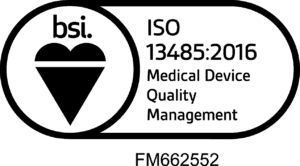E-Book: Precision GD&T in the Design, Manufacture and Assembly of Complex Medical Devices
Lowell, Inc. has authored dozens of white papers over the years on diverse subjects, from profile tolerancing to the automation of inspection equipment. We’ve worked hard to develop timely and relevant content for our customers and the orthopedic industry. We’ve been asked many times to combine our white papers by subject matter. Our ebooks are […]
E-Book: How to Define and Implement a Design Intent Strategy
Design intent is one of the most important—if not the most important—pieces of information an OEM can share with their manufacturing partner. In our experience, clearly communicating design intent is one of the best ways to ensure successful product results. Download our ebook to learn how to define and implement a design intent strategy. You’ll […]
7 Tips to Reduce Lead Times with Effective Project Management
Successful, on-time medical device manufacturing relies on strict timelines and schedules. Without a formal project management process, it’s difficult to stay on track and deliver for your customers. In this white paper, we share seven project management tips that have helped us decrease lead times on complex projects by 50 percent. These can be implemented […]
Improve Device Development with a Clear Design Intent Strategy
Communicating Clear Design Intent can make all the difference in Medical Device Development Realizing our customers’ design intent is one of our goals with any project. To share more about how a design intent strategy can improve the product development process, we created the white paper, “Improve Device Development with a Clear Design Intent Strategy.” […]
Critical Feature Confirmation in Complex Medical Assemblies
Critical feature confirmation (CFC) helps design teams determine which medical device features are critical so they can streamline the design, review and quality control processes. Download this white paper to learn more about this process and how it can help you improve design and testing of a new medical device.
Success by Design
Improving Design Intent, Communication and Medical Device Production with ASME Y14.5 2009 Standards Ensuring your engineering, manufacturing, and quality teams are aligned is critical to successful medical device development. Then why are there still so many issues with design intent not matching the parts created? Learn more about critical steps in the GD&T process and […]
How to Use Precision GD&T to Reduce Inspection Time for Complex Medical Devices
Precision geometrical dimensioning and tolerancing (GD&T) and profile tolerancing are key design methods to accelerate a medical device’s time to market by reducing inspection time. This white paper explores the positive impact that these methods has on three types of inspection: setup, in-process and final.
Metrology Matching
How Improved Communication Can Increase Supplier Performance Metrology matching, also called inspection matching, is a leading way to solve this issue. The process aligns two separate inspection systems, one from the OEM and one from the supplier. This ensures that everyone is on the same page for inspection and measurement, even if they use different […]
Statistical Methods for Precision Machining: An Overview
Medical device OEMs are utilizing data to prove their products’ efficacy to hospitals, doctors and the regulatory agencies. Lowell, Inc. is a leader in the use of measurement and data to improve and streamline the product development process. This white paper is an overview of Statistical Methods for Precision Machining and is the first in […]
Tolerance Stackups in Complex Medical Assemblies
If the tolerance stackup is done correctly, all medical device components will assemble together and function as intended. This white paper explores the benefits and limitations of three common methods for analyzing and presenting tolerance stackups in multicomponent medical device assemblies.

